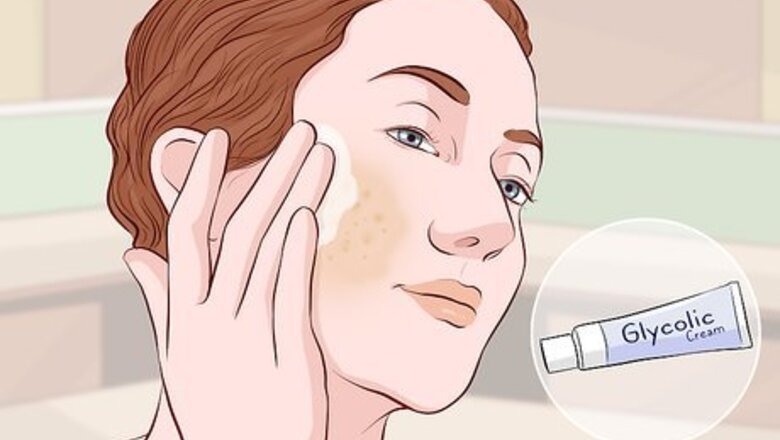
views
X
Research source
It's still fine if you want to get rid of them. The most common treatments are skin-lightening creams, laser treatments, or chemical peels performed by your dermatologist, but you may be curious about home remedies to lighten these spots. While many home remedies don’t work, a few have some research supporting them. You can try these tips out to see if they help you. If not, then speak to your dermatologist for further treatments.
Effective Natural Treatments
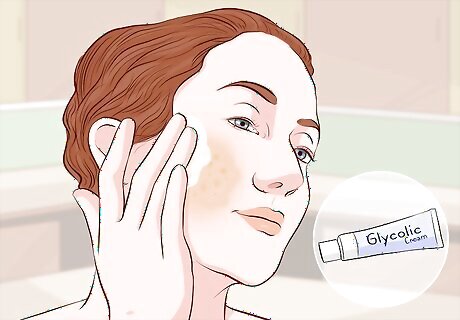
Fade the spots with glycolic or kojic acid creams. These are 2 popular ingredients in skin-lightening creams. You should be able to get creams containing either without a prescription, so check a pharmacy for the right one.
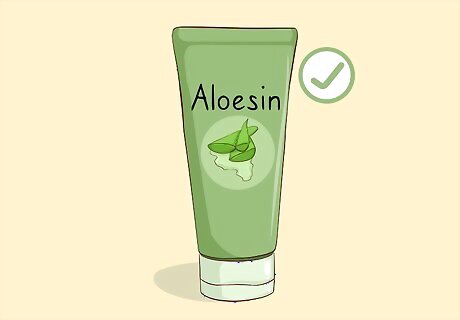
Prevent further darkening with aloesin. Aloesin comes from the aloe vera plant and helps helps stop skin from producing too much pigment. Check a pharmacy or online for this. Apply the cream 4 times a day for 15 days to prevent the spots from getting darker. Aloesin is not the same as pure aloe vera, so don’t confuse the two.
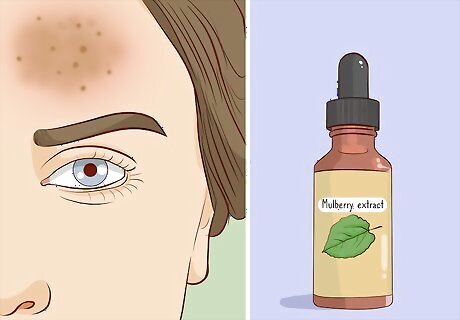
Try mulberry leaf extract. Mulberry extract successfully lightened dark spots in a study when compared to a placebo, so it could work for you. Rub a 75% extract oil onto your dark spots to see if the spots lighten. This is a less common item, so you'll probably need to look online for it.
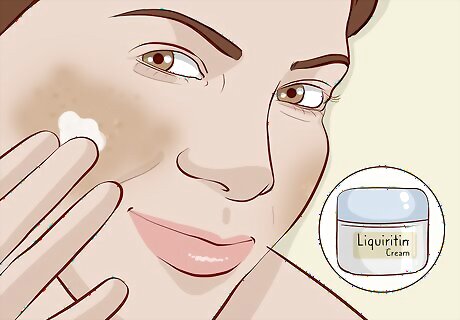
Rub liquiritin cream on your dark spots. This compound found in licorice might lighten your skin almost as well as conventional lightening creams. Try rubbing a 20% liquiritin cream onto your skin daily to see if it works. Licorice extract also showed some success in lightening dark spots, but only when mixed with other ingredients.

Use cream with niacinamide to moisturize dark spots. Niacinamide, a type of vitamin B3, is an effective skin moisturizer and might help lighten dark spots. Try applying a 4-5% niacinamide cream to your brown spots for 9 weeks to see if that helps.
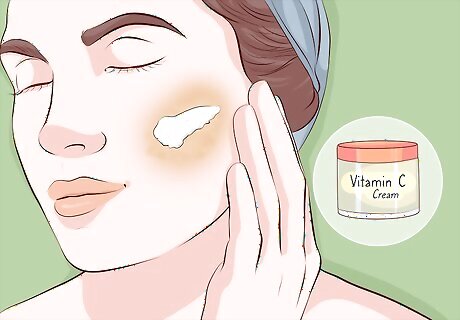
Nourish your skin with vitamin C cream. Vitamin C can also help fade brown spots, so get a cream with this ingredient and see if it works for you. These creams should be available at pharmacies.
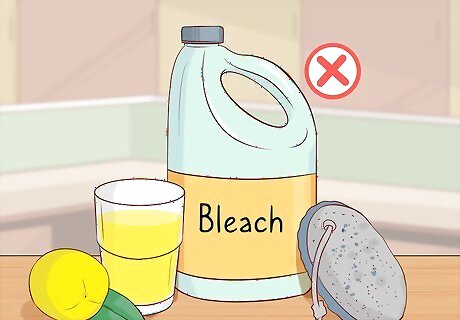
Don’t use lemon juice, bleach, or abrasive rubs on your skin. Some home remedies might be dangerous. Placing acidic or irritating things on your skin like lemon juice, vinegar, and bleach can be harmful to your skin. Also, store-bought abrasive rubs could do more harm than good, so skip these as well. A microdermabrasion could help lighten brown spots, but only if a professional dermatologist does it. Home treatments could be dangerous. If you have any doubts about what’s safe to put on your skin, ask a dermatologist.
Approved Medical Treatments
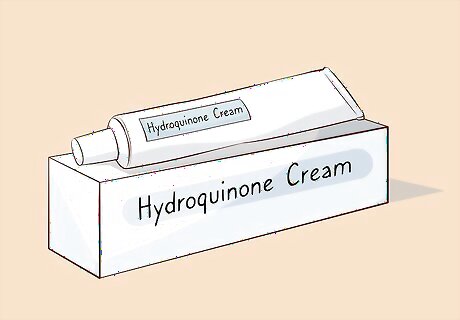
Use 2% hydroquinone cream for a conventional treatment. Hydroquinone (HQ) is a common skin-lightening cream, and probably what a dermatologist will recommend for you to start with. A 2% concentration should be available over the counter without a prescription, so get a bottle from a pharmacy. Wash your skin first, then rub the cream onto your brown spots. Repeat this once per day. HQ takes about 4 weeks to show results. You can also get a stronger HQ type with a prescription from your dermatologist.
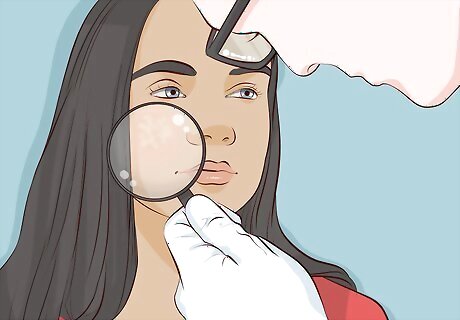
Ask your dermatologist for a retinoid prescription. Retinoids are topical steroid creams that are used for many issues, including acne, wrinkles, and brown spots. You'll probably need a prescription for this medication, so ask your dermatologist if it's right for you. Retinoids may cause some irritation if you have sensitive skin, so stop using the cream if you experience any problems.
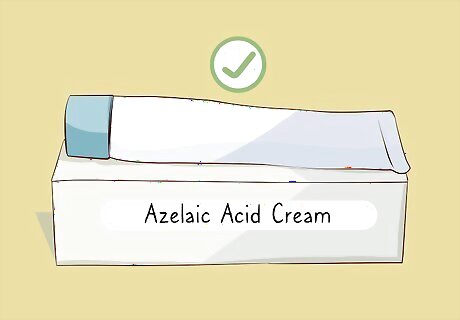
Apply 20% azelaic acid cream. This compound can lighten skin and shows some success in treating brown spots almost as well as HQ, or better in some cases. Try applying the cream once a day for 2 months to see if your brown spots improve. This cream may be more successful if you pair it with professional chemical peels, so discuss this treatment with your dermatologist.
Preventing Spots from Getting Darker
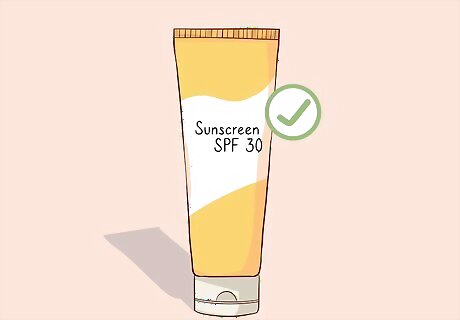
Apply 30 SPF sunblock every time you go outside. Even if it’s cloudy or raining, you’ll still get some sun exposure. Every time you leave your home, apply at least 30 SPF sunblock to all of your exposed skin to protect it from UV rays. Get a sunblock designed for oily skin labeled “won’t clog pores” if you have acne often. Reapply sunblock every 2 hours if you’re outside for a long time. If you’re swimming, reapply it when you come out of the water. It’s best to apply sunblock 15-30 minutes before going outside so you have the best protection possible as soon as you go out.

Stay inside when the sun is strongest. This might not be ideal, but it's the best way to stay safe during the sunniest parts of the day. Normally, this is between the hours of 10 AM and 2 PM. During these hours, the sun’s rays are strongest and could do the most damage to your skin. Try to arrange your schedule so you can stay inside during these hours and avoid exposure. If you do have to go outside, try to stay in the shade as much as you can.

Cover yourself with clothing, sunglasses, and a hat on sunny days. On sunny days when you have to go outside, sunblock might not be enough. Cover your skin as much as possible with light clothes to block as many UV rays as possible. Don't forget to grab a hat as well. You can get clothes designed for UV protection. Try to find clothes labeled UPF 40 or 50 to block more UV light.
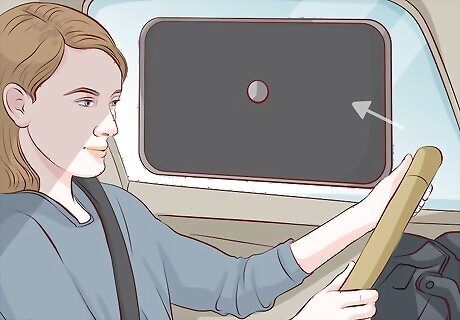
Install a UV-blocking coating on the driver’s side of your car. You might not expect it, but you can get a lot of sun exposure while you’re driving. Protect yourself on the road by installing a UV-blocking shield on your driver’s side window. This way, you can reduce your UV exposure on long drives.



















Comments
0 comment